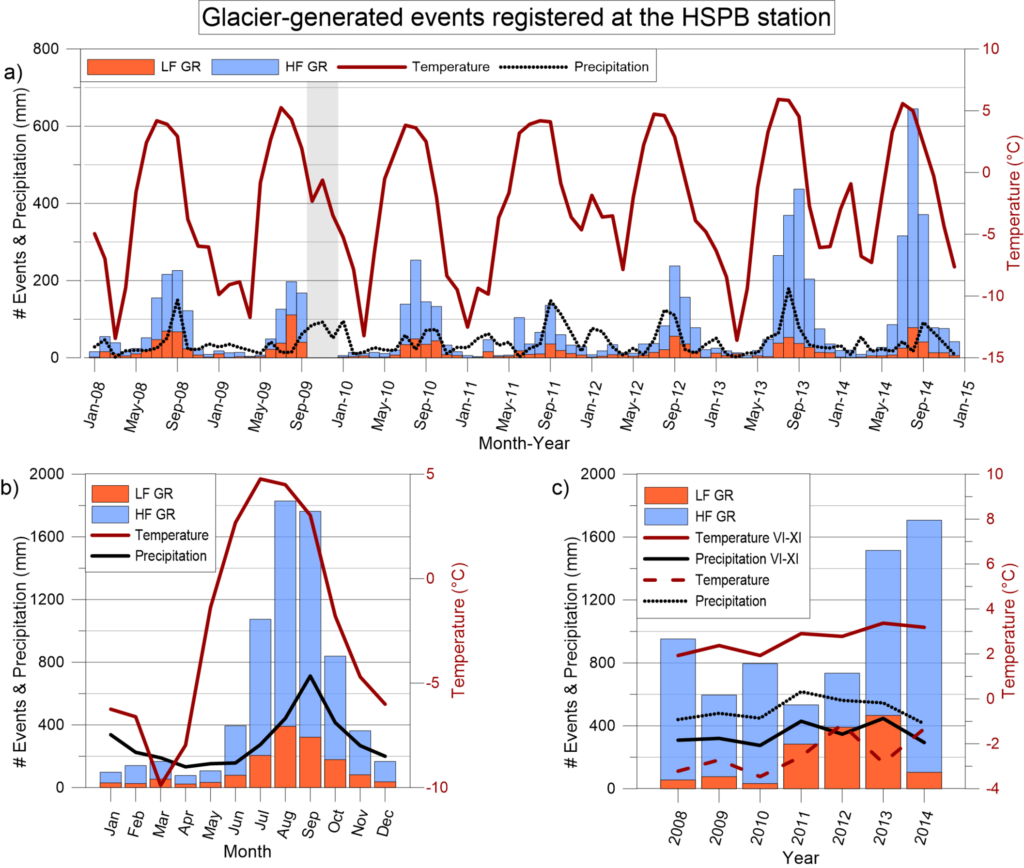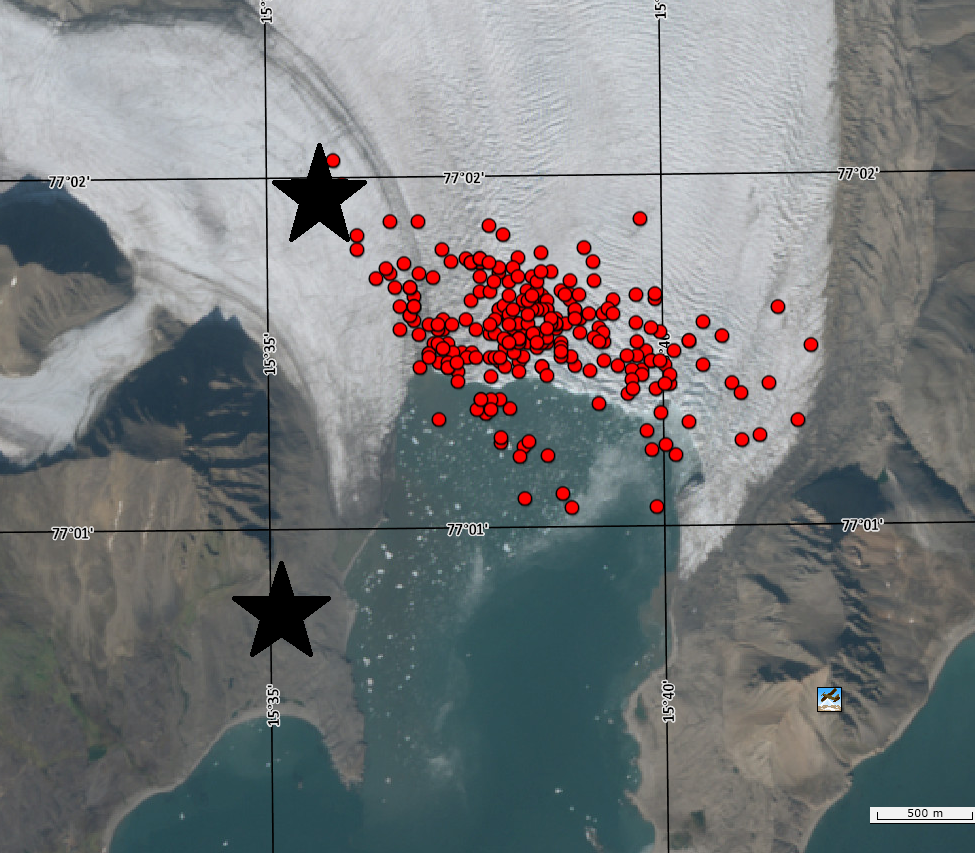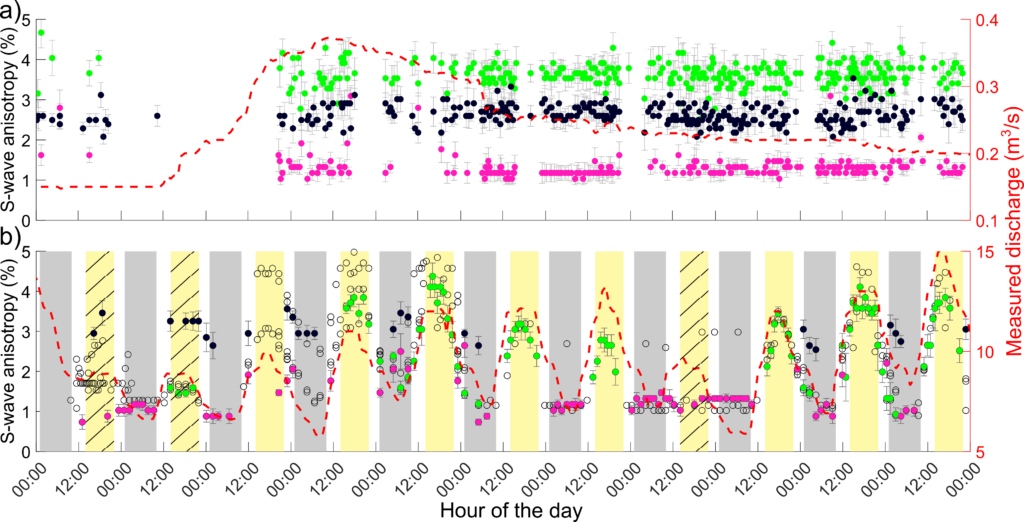Cryoseismology

Glaciers are dynamic systems that are in constant motion. Their movement, changes in their stress regime, cracks and crevasse expansion, iceberg calving and ice-basal friction all release energy, which can release detectable seismic signals.
Our research focuses on glaciers located in Hornsund, southern Spitsbergen, in the vicinity of Polish Polar Station, with special interest in Hans glacier.
We developed an automatic procedure capable of detecting glacier-induced seismic events using records from a single permanent seismological station located nearby Hans glacier. To distinguish between glacial and non-glacial signals, We developed a fuzzy logic algorithm based on the signal frequency and energy flow analysis.
The paper presenting 7-years long glacier activity analysis is available on-line HERE.
In September 2017 We have installed a seismic monitoring network around the Hans glacier calving cliff. The network have been recording permanently till May 2018. The data is being processed right now and is available online HERE. More on that topic can be find in Seismology chapter of SESS 2019 report and in project log. The project is carried by Wojciech Gajek and coworkers, financed by an internal grant of Institute of Geophysics Polish Academy of Sciences.

In a summer of 2021 we revisited the Hans glacier with an international group of scientists. Our goal was to investigate the dynamics of Hansbreen’s calving front. The field campaign lasted almost 10 days. The video featuring our fieldwork is here.
We monitored the calving front using 2 small seismic arrays aided by time-lapse remote sensing observations from a millimetre-wave radar (AVTIS2), Terrestrial Laser Scanner and cameras.
We work towards linking ice volumes derived from radar scans with parameters of seismic signal in order to be able to track calving-related volumetric ice loss remotely in a long-term manner.


Glacial ice is also anisotropic due to ice crystals alignment and spatially organised different scale discontinuities (from micro-cracks to crevasses).
My research conducted on Rhonegletscher in Swiss Alps showed that glacial ice can dynamically react to changing meltwater conditions that stimulate expansion and contraction of englacial fractures.
